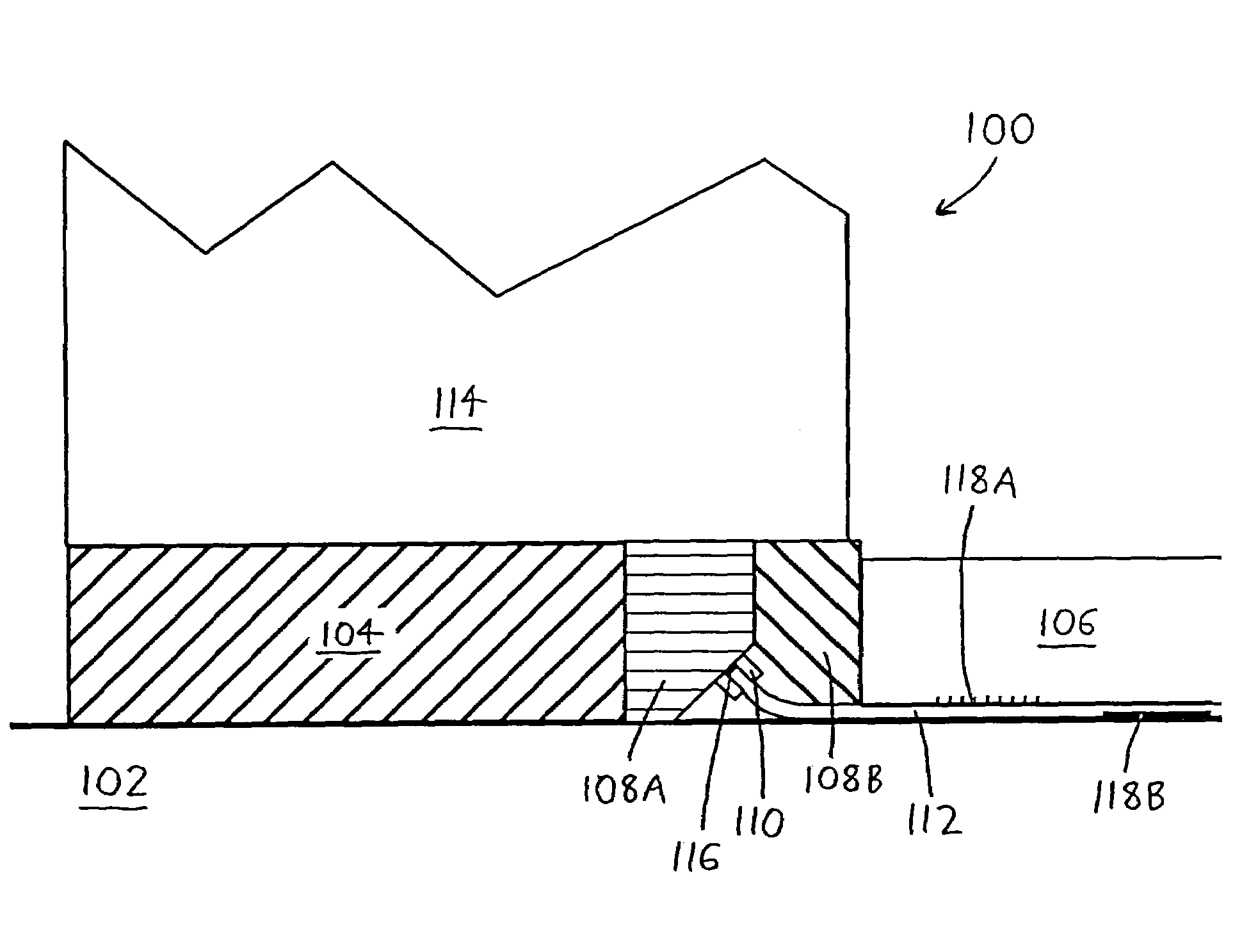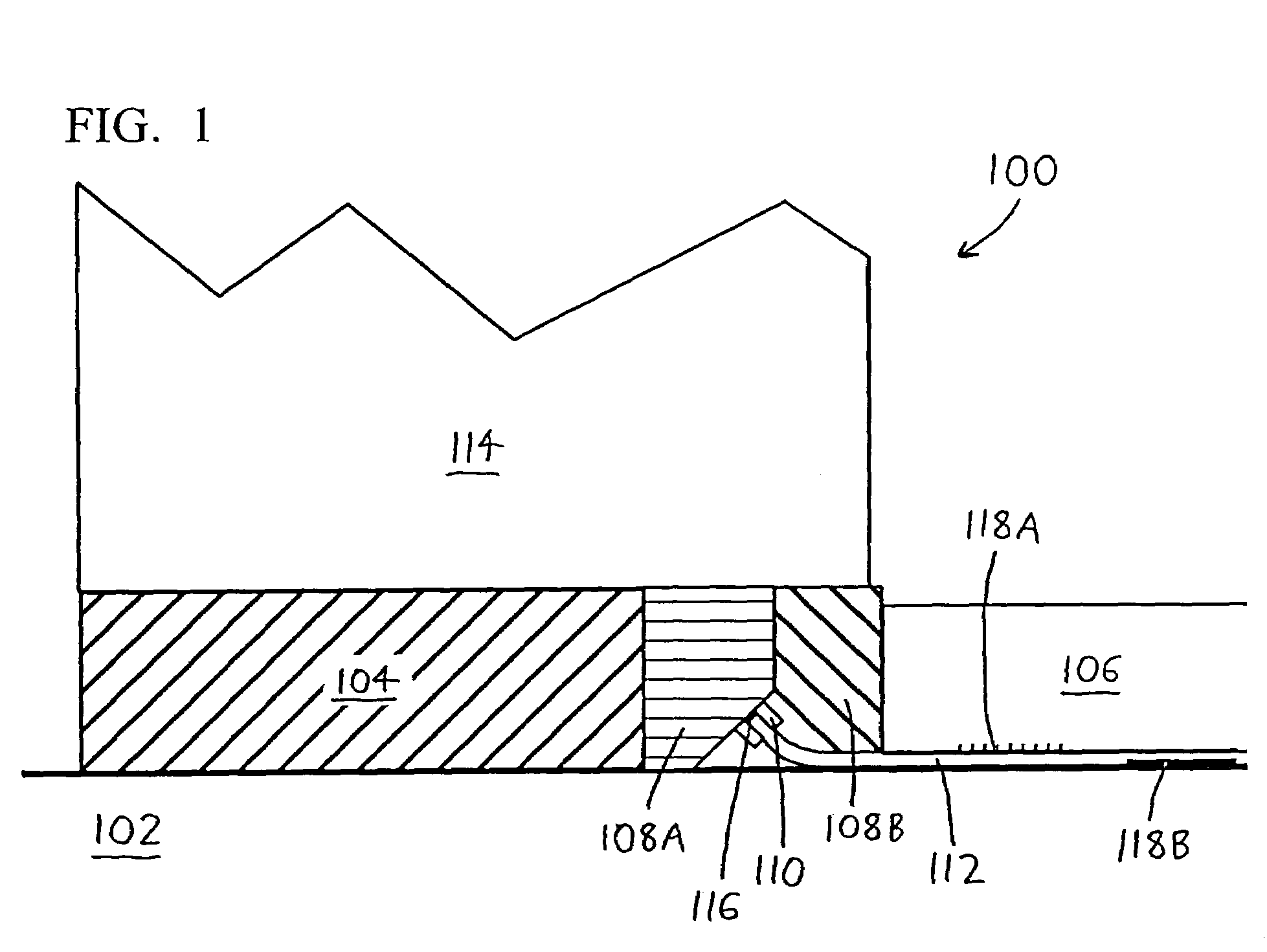Ice lighting device
a technology of lighting device and ice, which is applied in the field of lighting device, can solve the problems of not being widely used, device not known to be widely used, and image difficulty, and achieve the effect of being effectively disposabl
- Summary
- Abstract
- Description
- Claims
- Application Information
AI Technical Summary
Benefits of technology
Problems solved by technology
Method used
Image
Examples
Embodiment Construction
[0016]Looking to FIG. 1, a first exemplary version of the invention is depicted generally by the reference numeral 100. The lighting device 100 is depicted within a typical rink defined by a chilled concrete slab 102, and a dam 104 which rises above the slab 102 to encircle the periphery of a sheet of ice 106. A film mount is then provided in two parts, an inner part 108A and an outer part 108B, between the ice 106 and the inner surface of the dam 104. The inner film mount 108A has a clamp 110 situated thereon to grasp and retain a sheet of light-transmitting film 112, which extends beneath the outer film mount 108B to travel below the ice 106 (which is formed atop the film 112). A dasher board 114 is also provided atop the dam 104 and the film mount 108A / 108B.
[0017]A light source 116 is situated between the opposing parts of the clamp 110 to emit light into the edge of the film 112. The light travels within the interior of the film 112, and so long as the light travels substantiall...
PUM
 Login to View More
Login to View More Abstract
Description
Claims
Application Information
 Login to View More
Login to View More - R&D
- Intellectual Property
- Life Sciences
- Materials
- Tech Scout
- Unparalleled Data Quality
- Higher Quality Content
- 60% Fewer Hallucinations
Browse by: Latest US Patents, China's latest patents, Technical Efficacy Thesaurus, Application Domain, Technology Topic, Popular Technical Reports.
© 2025 PatSnap. All rights reserved.Legal|Privacy policy|Modern Slavery Act Transparency Statement|Sitemap|About US| Contact US: help@patsnap.com


